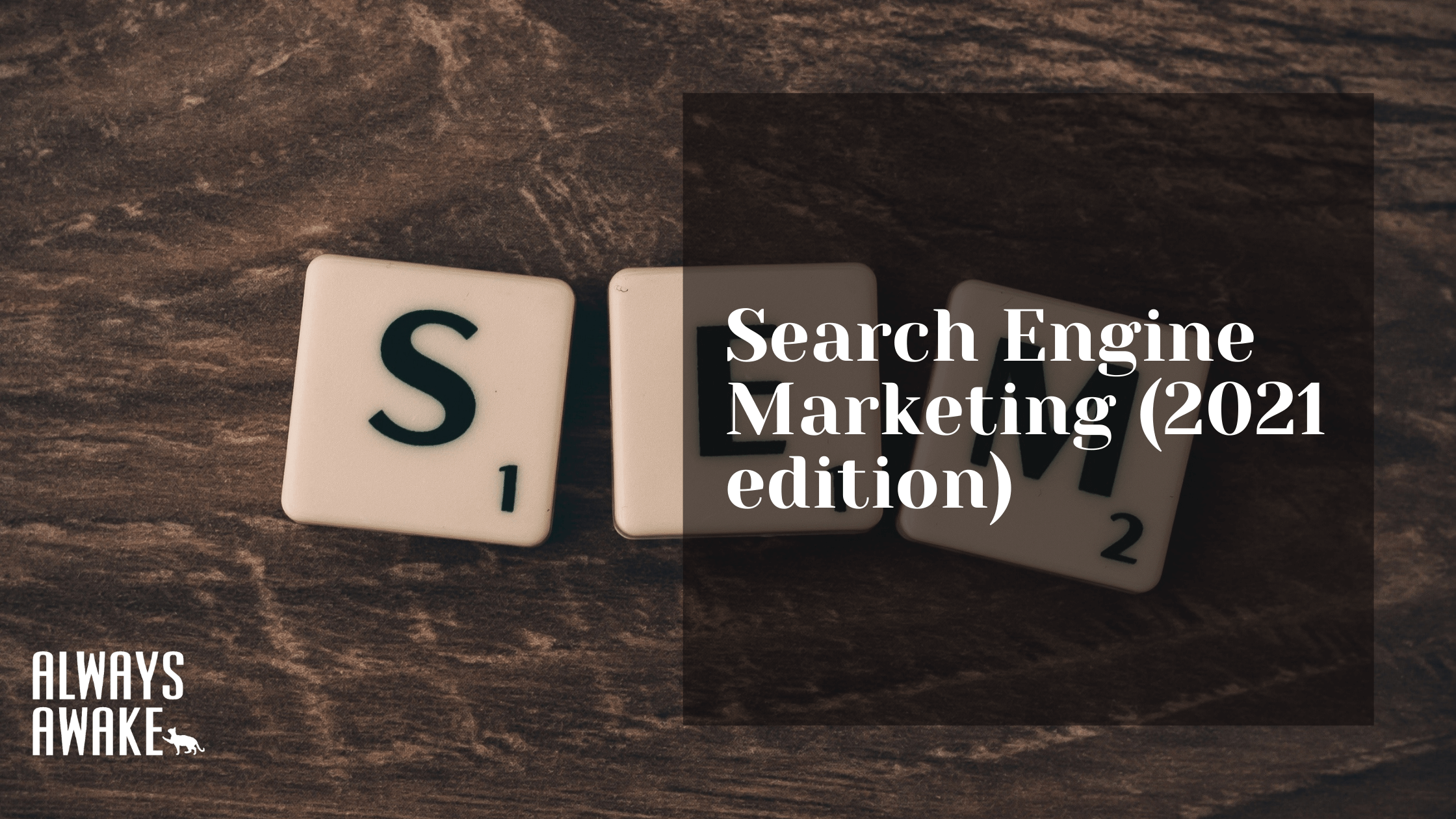
Search Engine Marketing (2021 edition)
Did you know that old school pay-per-click (PPC) tactics by today’s standards might actually cost you up to 90% wasted ad spend in your Search Engine Marketing due to the lack of focus and targeting in your campaigns, it’s worth spending some time to rethink your approach towards SEM.
Long ago, search engine marketing regarded both organic and paid research strategies in the same basket. However these days, SEM or Search Engine Marketing which use paid advertisements that appear on search engine results places, such as Google, Yahoo or Bing search, has been referred to as paid search engine advertising or pay-per-click (PPC) ads. Whereas Search Engine Optimization (SEO) is treated and tackled as a different entity within the digital marketing sphere.
Google Ads is currently the most popular search ad network that people use, to the point that the word “googling” has been coined to refer to searching online. With billions of searches made just on Google search engine alone, SEM, is one of the best approaches to develop your business in a progressively competitive marketplace. In order to stand out in such a crowded space, it’s all the more important to advertise online now to showcase your products and services to a worldwide audience.
Here we list 3 best practices of SEM, which we do for our clients, that help boost conversion rates.
1. The “get more clicks” mindset is not enough
Adopt the conversion mindset if you want your SEM strategy to bear good results.
It is not surprising that every marketer’s focus is on driving as many clicks as possible. And praying that the clicks can convert to sales. That’s a naive thought.
Focussing on getting as many clicks as possible would only mean that you are getting both the good and the bad clicks. This can be costly as the bad clicks are irrelevant and not interested in what you offer, and you are still paying for these clicks. Whereas the good clicks if you don’t focus on what they do after they click on your ads, you are just going to lose potential sales, and that is why the average conversion rate is very low.
2. Focus on the right keywords
Being focused on conversion doesn’t mean you forget about keywords. Keywords are the basis of how people can find you, and you need to be focusing on the right keywords that represent your brand, your product and what you offer. Your objective is to do all you can to target high-intent keywords to capture eyeballs.
Followed by long-tail keywords to lower your ads cost and also to be highly relevant since they are of narrow focus. Besides being less expensive, long-tail keywords clicks are also more likely to have a higher buying intent that can convert to sales. For example, someone searching for a “50 inch UHD Smart TV” is more ready to buy than someone searching for a “Smart TV.”
Targeting the right keywords will likely increase the relevance of your ads and boost your Quality Score (a very important component of Google Ads campaigns). This can help you reduce the cost and get you more potential conversions.
3. Personalize ad campaigns that speaks to your ideal client
It’s not surprising to find that most SEM campaigns are written using a “formula-like” approach such as dynamic keyword insertion technique, which makes it a lot easier for the marketer to create specific and highly targeted ads at volume. But from a user’s perspective these keywords-stuffed ads might feel too generic and impersonal, and this can also cause your ideal client to be turned off.
Instead, think from your ideal client’s perspective. Start off by building your ideal client’s avatar, with information such as their name, age, gender, education, occupation, income, hobbies, marriage status, religion, job, etc. And with this avatar, you can build your target audience and personalize your ads to speak to them.
Remember, if you do not target anyone, you target no one.

